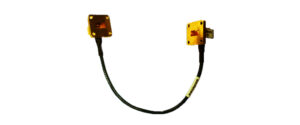Understanding Waveguide Short Circuits
Waveguide short circuits are essential components in the realm of electromagnetic wave propagation. These ingenious devices are designed to effectively terminate a waveguide by presenting a low impedance path to electromagnetic waves. By doing so, they prevent the unwanted reflection of signals that could interfere with the desired transmission. In essence, waveguide short circuits aid in maintaining signal integrity and efficient communication systems.
Design Methods of Waveguide Short Circuits
The design of waveguide short circuits is a meticulous process that involves intricate calculations and engineering finesse. Engineers and researchers employ various methods to achieve optimal performance. One common approach involves creating a stub, a small branch extending from the main waveguide, which acts as the short circuit. This technique allows for precise tuning of the short circuit’s characteristics.
Another method utilizes irises, which are thin metallic plates inserted perpendicular to the waveguide’s direction. These irises enable engineers to control the reflection of waves by adjusting their size and placement. This design method offers a versatile way to achieve specific impedance-matching requirements.

Size Optimization of Waveguide Short Circuits
The size of waveguide short circuits plays a significant role in their overall functionality. Size optimization is crucial to ensure minimal signal loss and effective control of electromagnetic waves. Engineers strive to strike a balance between compactness and performance, often relying on advanced simulation tools to model and analyze the behavior of different designs.
Size optimization involves fine-tuning parameters like stub length, iris dimensions, and the placement of the short circuit within the waveguide. With the help of electromagnetic simulation software, engineers can predict how these changes will impact the overall performance of the short circuit. This iterative process allows for the creation of efficient, space-saving designs that meet the specific requirements of various applications.
Materials for Manufacturing Waveguide Short Circuits
Manufacturing waveguide short circuits requires careful consideration of materials to ensure durability, performance, and compatibility with the intended application. The choice of materials can impact factors such as signal loss, power handling capabilities, and environmental stability.
Commonly used materials include various metals like aluminum, brass, and copper. These metals offer excellent conductivity and are relatively easy to machine into precise shapes. For applications that demand higher power handling capabilities, materials with better heat dissipation properties might be preferred.
In cases where weight is a concern, lightweight materials like certain plastics or composites can be employed. These materials are especially advantageous in aerospace and portable communication systems where minimizing weight is crucial.
Advancements and Future Trends
The field of waveguide short circuits is dynamic, with ongoing research leading to continuous advancements. As technology evolves, there is a growing interest in integrating waveguide short circuits into compact, multi-functional devices. This integration could potentially lead to the development of highly efficient, miniaturized components for various applications, ranging from telecommunications to medical devices.
Furthermore, the optimization techniques are becoming more sophisticated, driven by computational advancements. Design automation, machine learning, and optimization algorithms are now being employed to expedite the process of creating effective waveguide short circuits with minimal manual intervention.
In the realm of materials, researchers are exploring novel options that offer enhanced performance and versatility. This includes the investigation of advanced composite materials, nanomaterials, and metamaterials that could revolutionize the capabilities of waveguide short circuits.
Conclusion
In conclusion, the principle of waveguide short circuits stands as a cornerstone of modern communication and signal control. The meticulous design methods, size optimization techniques, and careful selection of materials all contribute to the efficient functioning of these components. As technology continues to advance, the potential applications of waveguide short circuits are expanding, paving the way for innovative solutions in diverse fields. Whether you’re an engineer, researcher, or simply curious about the world of electromagnetic waves, understanding the intricacies of waveguide short circuits is a captivating journey into the heart of modern technology.
We are happy to know more about your needs, please let us know via [email protected].







